Comparing the Food Strategies of Each – Survivopedia
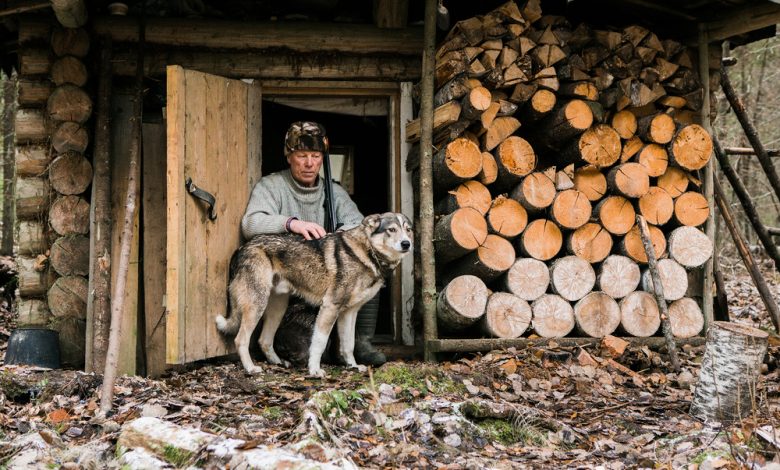
Throughout human history, food procurement and production strategies have varied according to the challenges cultures faced, their environments, cultural knowledge, and the resources that were available to them.
Each culture certainly had its own strategies and adaptations, and anthropologists love to discuss the differences between foraging vs. pastoralism vs horticulture vs agriculture, but I think these three cultures are perhaps more notable for what they have in common than for their differences.
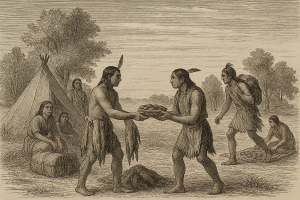
North American indigenous tribes generally demonstrated remarkable ecological understanding by seasonal foraging and hunting, moving according to game migrations and harvesting wild edibles and insects precisely when they became available.
However, there were numerous indigenous tribes in North America, and each one showed great creativity and diversity in how they fed themselves, so it would be an oversimplification to say, “Native Americans were hunter-gatherers or farmers prior to European contact and colonization.” Most tribes planted crops, foraged and hunted and/or fished, but the percentage derived from each food source varied greatly from one tribe to another and several tribes also domesticated animals and/or insects. (Hodge, 1913)
While most remains show a diverse diet, some tribes experimented with monoculture, especially of maize, which may have eventually led to famine and human migration.
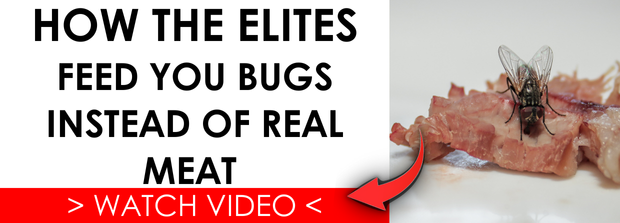
Inter-Tribal Cooperation and Commerce
At times, some tribes, in what is now the Western USA, kept the peace by agreeing to eat certain animal food sources and leave other animals for other tribes to harvest. Although many tribes identified their own tribe as “the people” they often identified other tribes by what they ate, such as, “the salmon eaters” or the “the rabbit eaters.”
The wavy sign used by the Shoshone in plains sign language for “salmon” was probably recognized by other plains tribes as “snake” as the Shoshone relied on the salmon run for food and were sometimes called the “Snake Indians” by plains tribes and mountain men.
Tribes would trade for resources they could not get or make themselves, as the Shoshone famously traded horses to the Lewis & Clark expedition, tribes would also barter for food and later for alcohol and coffee.
The Three Sisters
Some tribes were hunter-gatherers. Others planted garden plots but did not harvest enough to carry the tribe through the winter, so they moved to winter hunting camps. Others lived in the same dwellings year-round and even constructed networks of canals to irrigate farmland. Native Americans famously developed the Three Sisters farming model where corn, beans, and squash were planted in mounds. The corn stalks formed a trellis for the beans to climb, and the squash shaded the mound, reducing the amount of water needed. The beans fixed nitrogen which was used by the corn and fish where sometimes added to the soil, adding nitrogen.
Melons were sometimes substituted for squash and sunflowers were often companion planted as a “fourth sister” for their nutritious seeds. The “Three Sisters” method was highly effective and is still used in gardening to this day.
>>Small-scale growers still use this centuries-old wisdom. Discover how families today apply these companion planting secrets in modern gardens.
The Indigenous Diet
Diets varied by environment, but in what is now the lower 48 states, food sources included:
- Venison – Nearly all tribes hunted deer.
- Elk – Elk were an important food source in the Rocky Mountains.
- Pronghorn – Although they look like antelope and fill a similar ecological niche, pronghorn are more closely related to the giraffe than to antelope, goats, sheep or deer.
- Big Horn Sheep
- Bison – After the megafauna died off, bison provided food, shelter, clothing and tools for tribes in what are now most of the lower 48 states.
- Small Game – Waterfowl, turkeys, birds, rabbits, squirrels, rodents.
- Fish – Tribes used a variety of methods to capture fish and fish were a primary food source for certain tribes.
- Maize – The importance of maize cannot be understated, but various tribes carried out experiments in monoculture of this important crop in both pre- and post-Columbian America, leading to nutritional problems and soil destruction.
- Beans
- Squash
- Sunflower Seeds
- Nuts – Pecans, walnuts, pinyon pine nuts
- Acorns
- Roots and Tubers – Sweet potato, camas.
- Wild Fruits – Plums, mesquite beans are the bean shaped fruits of the mesquite tree.
- Wild Rice – Some northern tribes harvested wild rice.
- Tomatoes
- Peppers
- Insects – Cicada larvae, grasshoppers, certain species of caterpillars, katydids, ants and insect larvae were harvested on a large scale and prepared in various dishes, usually mixed with other foods. It is estimated that insects were on the menu of between 25% and 50% of tribes.(Hay, 2018)
- Maple Sugar – Maple sugar comes from sugar maple, black maple and red maple trees and was and still is prized as a sweetener.(Wikipedia, 2025)
- Honey – Some tribes gathered wild honey and others engaged in beekeeping. Central American tribes domesticated the stingless bee.
- Salt – Salt was harvested from salt deposits, salt springs, dry lake beds and seawater. The locations of salt deposits where important information, first to indigenous Americans and later to European colonizers and salt was traded in the Americas just as it was traded in old world.(Ilife, 1954)
In addition to food crops, they also grew tobacco, cotton and medicinal herbs.
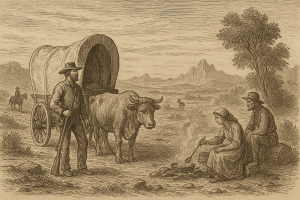
The pioneers used a hybrid approach to food procurement and food production which horticulture, or rudimentary agriculture, with hunting and gathering. Most practiced small-scale farming or gardening growing heirloom crops, including wheat, corn, vegetables and fruit on their land. They ranched cattle, sheep, horses, and chickens, hunted deer, elk, buffalo, rabbits and other game to provide protein, and foraged wild berries, nuts and other wild edibles.
Barter and Commerce
Water is scarce in the western USA and people who lived there before the transcontinental railroad was completed subsisted off whatever food was available, Native Americans, mountain men and pioneers included. Early on, when the Native Americans had extra food, they sold it to the pioneers and mountain men and vice versa. Knowledge was also exchanged between the pioneers and Native Americans.
Irrigation
When the Mormon Battalion trekked across the Southwest to San Diego, they learned irrigation techniques from Native Americans in Arizona. Once they fulfilled their military obligations, they went to Salt Lake City and passed along what they had learned about using canals to irrigate the desert and greatly improving agricultural output achievable by dry farming in the intermountain west.
Food Preservation
The pioneers dried meat, canned vegetables, and stored root crops in cellars and grains in granaries to ensure that they could survive the winter. Over time, communities became established or were relocated to more productive sites and the pioneers “made the desert bloom.”
>>Old preservation tricks still outperform many modern methods. Learn the forgotten ways families once kept food fresh without electricity.
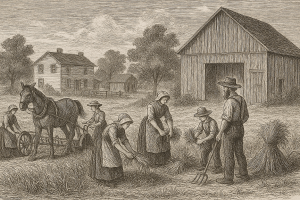
The modern Amish live primarily in rural areas of Pennsylvania, Ohio, and Indiana. They still exemplify structured agriculture, using crop rotation, animal husbandry, and food preservation techniques that ensure they have enough food to get through winter.
Today, the Amish are known for farming using horse-drawn equipment and manual labor. They are committed to farming organically and use crop rotation and natural compost made from green waste and manure.
What many folks may not know about the Amish, when it comes to food procurement, is that most of them also hunt and fish. Today Amish men and women hunt and fish.
Like the pioneers and indigenous tribes, the Amish also engage in barter and commerce to obtain things they cannot produce or make themselves.
>>Building that independence starts with knowledge. See the proven system preppers use to secure a year-round food source no matter where they live.
From indigenous tribes, the Amish and the pioneers, we observe that adaptation and diversification are key to survival. By integrating several methods of procuring or producing food – organic heirloom gardening, knowledge of wild edibles, hunting, fishing, food preservation techniques and food storage – all three of these groups provided most of what they needed to live and bartered for what they could not. By following in their footsteps, we can become less dependent on fragile global food supply chains.

Monoculture
We can also learn from their mistakes. Overdependence on a single crop (monoculture) makes crops vulnerable to pests, bad weather and diseases. It can also cause malnutrition-related illnesses in the people depending on a diet that is not sufficiently diverse. Indigenous populations there were overly dependent on maize had high rates thiamine deficiency or beriberi.
Monoculture also depletes the soil, making it necessary to use fertilizer. Soil depletion due to monoculture may have caused the fall of indigenous cultures. Monoculture and over-reliance on a few staple crops is still causing food insecurity today.
>>Traditional farmers had a better way. Discover the forgotten soil practices that restored fertility naturally and kept harvests thriving.
Takeaways
The lesson taught by these three cultures is adaptability: we must understand our local ecosystems, develop basic survival skills, and be flexible in our food acquisition strategies. In short, we cannot possibly know what the future may bring, but we can improve our chances of surviving it by being adaptable and diversifying both our crops and the methods that we use to feed ourselves.






References
Hay, M. (2018, April 2). Why Eating Insects Is an American Tradition. Retrieved from atlasobscura.com:
https://www.atlasobscura.com/articles/history-of-eating-bugs-america
Hodge, F. W. (1913). Handbook of Indians of Canada. Ottawa: C.H. Parmelee.
Ilife, F. G. (1954). Report for the Great Father in Washington. In F. G. Ilife, People of the Blue Water: A Record of Life Among the Walapai and Havasupai Indians (pp. 102–118). New York: Harper.
Wikipedia. (2025, August 21). Maple sugar. Retrieved from wikipedia.org:
https://en.wikipedia.org/wiki/Maple_sugar







